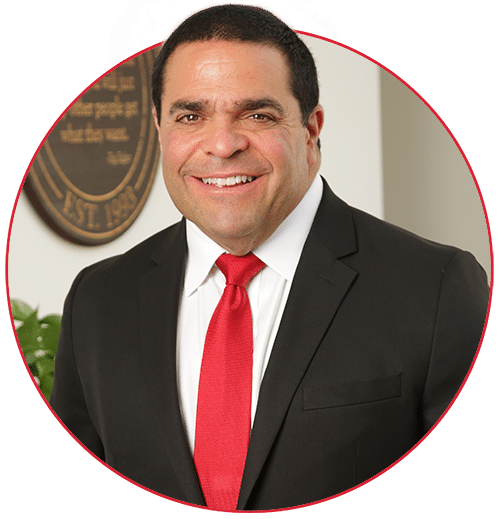$10 Million Settlement Reached in GEICO Class Action Lawsuit
Last updated Wednesday, September 18th, 2024

The GEICO class action lawsuit claims that the company underpaid policyholders by not covering full sales tax and regulatory fees on totaled vehicles. This has led to a $10 million settlement. This article breaks down the lawsuit, who it affects, and what the outcome means for policyholders.
Key Takeaways
- GEICO has agreed to a $10 million settlement in a class action lawsuit for failing to fully reimburse policyholders for sales tax and regulatory fees on total loss claims.
- Approximately 33,000 GEICO policyholders who had total loss claims between November 5, 2010, and November 30, 2023, may be eligible for compensation under the settlement.
- The U.S. District Court for the Middle District of Louisiana played a crucial oversight role, ensuring the settlement terms were fair, adequate, and reasonable for all parties involved.
Overview of the GEICO Class Action Lawsuit
The GEICO class action lawsuit revolves around serious allegations that the insurer failed to fully reimburse policyholders for sales tax and regulatory fees after their vehicles were declared total losses.
This issue has impacted numerous policyholders who filed total loss claims under GEICO’s automotive insurance policies, leaving them feeling betrayed by their insurance provider. The plaintiffs accused GEICO of breaching their insurance contracts by not fully compensating for totaled vehicles, resulting in significant financial shortfalls for the insured.
These allegations against GEICO, a well-known GEICO general insurance company, have led to a landmark class action lawsuit, with the insurer accused of underpaying claims related to vehicle damage and replacement costs. The lawsuit aims to address these claims of under-compensation and hold GEICO, also operating as a GEICO indemnity company, accountable for its actions.
One must fully grasp the severity of these allegations to appreciate the gravity of the $10 million settlement. The following subsections will provide a detailed look into the background of the case, the specific allegations made against GEICO, and the role of the United States District Court in overseeing the proceedings.
Background of the Case
The class action lawsuit against GEICO began with complaints from policyholders who felt they were not fully compensated for the total loss of their vehicles. These initial grievances highlighted GEICO’s failure to include essential costs such as sales tax and regulatory fees in their total loss claim payments. This omission led to significant financial shortfalls for the insured, who expected full reimbursement under their policies.
The case gained momentum when Sherry and David Lewis sued GEICO, alleging that the insurer had used a ‘condition adjustment’ to reduce their car’s actual cash value. This lawsuit sought to address the broader issue of under-compensation for insureds whose cars were declared total losses, bringing to light GEICO’s practices that many policyholders found unjust.
Allegations Against GEICO
The plaintiffs in the class action lawsuit alleged that GEICO systematically underpaid claims by not including sales tax and regulatory fees in their total loss settlements. This omission resulted in significant underpayment for policyholders who had first-party damage claims for their vehicles. GEICO was accused of failing to properly calculate and reimburse these costs, which are essential for replacing totaled vehicles.
Specifically, the lawsuit claimed that GEICO did not pay the full applicable sales tax and regulatory fees, such as title transfer, handling, and registration fees, in their total loss claim payments. This failure to fully compensate policyholders was seen as a violation of Louisiana insurance laws, which mandate such reimbursements.
The plaintiffs argued that GEICO’s actions constituted unjust enrichment and a breach of the insurance contracts, as the insurer did not adhere to the agreed-upon terms. These material allegations formed the crux of the class action lawsuit, leading to the eventual $10 million settlement to address these grievances.
Role of the United States District Court
The U.S. District Court for the Middle District of Louisiana was instrumental in supervising the GEICO class action lawsuit. This court was responsible for:
- ensuring that the settlement terms were fair and just for all parties involved, including the plaintiffs and GEICO
- certifying the class of underpaid policyholders
- managing the legal proceedings
The court’s participation was vital in overseeing the case and ensuring a fair resolution.
The court’s responsibilities involved approving the settlement terms and guaranteeing adherence to federal regulations. This ensured that the settlement was not only legally sound but also equitable for the affected policyholders, providing a framework for the resolution of their claims.
Settlement Terms and Conditions
The settlement agreement reached between GEICO and the plaintiffs marks a significant resolution to the class action lawsuit. GEICO agreed to pay a total of $10 million to settle the allegations and cover specific regulatory fees owed by claimants. This settlement aims to address the financial shortfalls experienced by policyholders who were underpaid on their total loss claims.
The following subsections will delve into the specifics of:
- The total settlement amount
- How the settlement payments will be distributed among the plaintiffs
- The deductions for Class Counsel Fees and court-awarded costs.
Total Settlement Amount
The total settlement amount agreed upon in the GEICO class action lawsuit is $10 million. This substantial payout is intended to compensate the affected policyholders for the underpaid claims and cover the regulatory fees that were not initially reimbursed by GEICO.
Distribution of Settlement Payments
Settlement payments will be distributed among the plaintiffs based on the proportion of claims made, ensuring that each claimant receives a fair share of the settlement amount. GEICO will pay up to $80 in regulatory fees per claimant, which will be adjusted based on each claimant’s proportional share of Class Counsel Fees and court-awarded costs.
This distribution method aims to provide equitable compensation to all affected policyholders while accounting for the legal fees and costs associated with the lawsuit. Each claimant’s payment may be adjusted to reflect the specific regulatory fees paid by GEICO as part of the total loss claim payment.
Deductions for Class Counsel Fees and Court-Awarded Costs
A portion of the $10 million settlement will be allocated to cover Class Counsel Fees and court-awarded costs, which will be deducted from the total settlement amount. This means that each claimant’s compensation will be reduced by their proportional share of these legal fees.
The deduction for legal fees and court-awarded costs ensures that the expenses incurred in pursuing the lawsuit are covered, but it also means that the final amount each claimant receives will be less than the initial allocation. This adjustment is necessary to balance the financial demands of the legal process with the need to fairly compensate the affected policyholders.
Eligibility for Settlement Class Members
Approximately 33,000 GEICO policyholders may qualify as class members for the settlement, based on specific eligibility criteria and claim periods. To be considered part of the settlement class, policyholders must meet certain conditions related to the time period of their claims and the types of claims made.
The following subsections will outline:
- The specific time periods during which claims must have been made
- The types of eligible claims
- How potential class members can confirm their inclusion in the settlement class.
Time Period of Claims
Eligible claims for the GEICO lawsuit must have been made between November 5, 2010, and November 30, 2023.
Additionally, for the Texas Regulatory Fees Settlement Class, the claims must have been made between May 5, 2016, and March 18, 2024.
Types of Eligible Claims
Eligible claims include total loss claims paid by GEICO under comprehensive or collision coverage, where sales tax and regulatory fees were not fully compensated. These claims are divided into two groups: those owed sales tax and those owed regulatory fees.
To qualify, policyholders must have had their total loss claims paid under comprehensive or collision coverage, which GEICO allegedly failed to fully reimburse. This failure to pay the full applicable sales tax and regulatory fees is at the heart of the class action lawsuit.
How to Confirm Your Membership
Potential class members can confirm their inclusion in the settlement class by verifying that they meet the eligibility criteria, including having a relevant insurance policy, making a claim within the specified period, and not opting out. To assist with this verification and to pay settlement class members, individuals can contact the settlement administrator for guidance and clarification.
Submitting a Claim Form
Claimants must submit a valid, timely claim form to be eligible for settlement payments. This section will guide you through the necessary steps to file a claim, including gathering the required documentation and following the submission process.
The subsections will detail the necessary documentation, the submission process, and the deadline for submissions to ensure your claim is processed correctly.
Necessary Documentation
To launch a successful claim, follow these steps:
- Gather itemized receipts from your healthcare provider that detail the services received and related costs.
- Complete the claim form.
- Submit the claim form and necessary documents to the address found on your Medicare Summary Notice.
You should check your documents and consult your insurance company prior to sending your claim to ensure all necessary paperwork is in place. Make at least one copy of your entire claim form and all collected receipts before submission as a precautionary measure against potential complications.
Submission Process
Leverage the mobile apps provided by insurers to lodge claims, upload photos, and monitor the status of your claim. These apps streamline the submission process, making it easier and more efficient for claimants to file their claims and receive updates.
Final Approval Hearing
The final approval hearing is an integral part of the class action lawsuit process, during which the court evaluates the fairness, adequacy, and reasonableness of the settlement. During this hearing, the court evaluates presentations from both parties to ensure the settlement terms are just for all involved.
The subsections will provide details on the date and location of the final approval hearing, what to expect during the hearing, and the potential outcomes.
Date and Location
The date and location of the final approval hearing are typically provided in the class notice sent to all class members. This notice includes instructions on how to access the case docket via PACER or in person at any of the court’s locations.
What to Expect at the Hearing
Class members can attend the final approval hearing, where they can raise objections or comments regarding the settlement. The court will hear presentations from both parties, including arguments for and against the settlement.
Potential Outcomes
If the judge deems the settlement fair, adequate, and reasonable, the court will grant final approval, allowing benefits to be distributed to class members. If the court approves the settlement, it becomes binding, and the judgment will include a provision for the court’s retention of jurisdiction over the parties to enforce the settlement terms.
However, if the court denies approval, the settlement does not go into effect, and the litigation may continue.
Impact of the Settlement
The settlement is anticipated to influence not just GEICO but the wider insurance industry as well. It serves as a reminder for policyholders to be vigilant and assertive about their rights and claims against insurers. The resolution of this class action lawsuit could lead to more transparent and fairer practices within the insurance industry.
The following subsections will explore the financial impact on GEICO, potential changes to GEICO’s policies, and the precedent set for future cases.
Financial Impact on GEICO
The $10 million payout will have a direct impact on GEICO’s financial statements, diminishing their profitability for the fiscal year. This substantial settlement represents a significant financial hit for GEICO, which may lead the company to reassess its premium rates or internal costs to offset the payout.
Additionally, GEICO may need to reallocate funds or adjust its financial strategies to accommodate the cash payment for settlement payments.
Changes to GEICO Policies
As a reaction to the lawsuit, GEICO may enforce more stringent underwriting guidelines to lessen future risks. The insurer could also introduce more comprehensive training for their adjusters to ensure better handling of claims.
Moreover, GEICO may provide clearer policy documentation to prevent future legal disputes and ensure that policyholders fully understand their coverage.
Precedent for Future Cases
This settlement establishes a legal precedent that could be referenced in prospective class action lawsuits against insurance companies. It encourages other policyholders to pursue class action lawsuits for similar issues, potentially leading to larger settlements or more favorable outcomes in similar disputes.
Insurers might face stricter legal challenges in the future if they fail to adhere to their policy terms, reinforcing the need for transparency and fairness in claim settlements.
Frequently Asked Questions
What was the main issue in the GEICO class action lawsuit?
The main issue in the GEICO class action lawsuit was the alleged failure to fully reimburse policyholders for sales tax and regulatory fees after their vehicles were declared total losses. This was a significant concern for the affected policyholders.
How much is the total settlement amount agreed upon in the lawsuit?
The total settlement amount agreed upon in the GEICO class action lawsuit is $10 million. This was the amount agreed upon to settle the lawsuit.
Who qualifies as a member of the settlement class?
Approximately 33,000 GEICO policyholders who submitted a covered total loss claim between November 5, 2010, and November 30, 2023, may qualify as class members. These policyholders are considered members of the settlement class.
What documentation is necessary to submit a claim form?
To submit a claim form, you will need to collect itemized receipts and complete the claim form with the necessary documents, such as detailed service costs. This is essential for processing your claim.
What happens if the court denies the settlement approval?
If the court denies approval, the settlement will not be put into effect, and the litigation may proceed.












